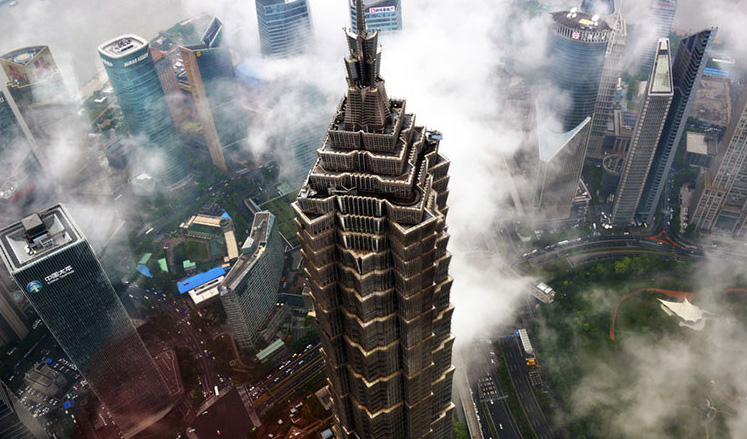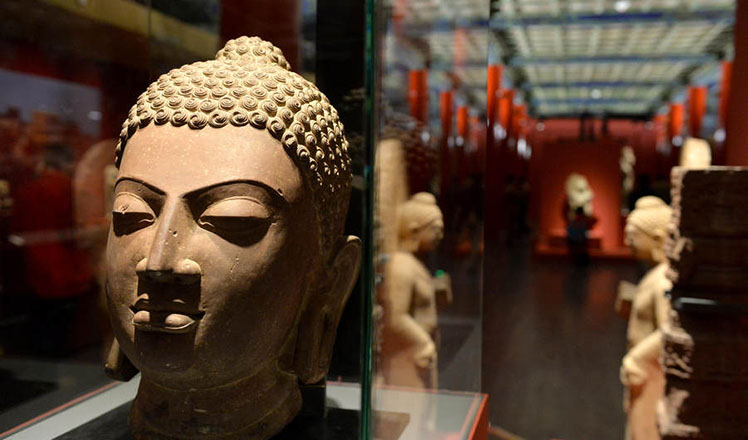Ancient attractions pull visitors to Yangzhou
Updated: 2016-10-04 10:13
By Cang Wei(China Daily)
|
||||||||
 |
|
Slender West Lake in Yangzhou, Oct 3, 2016. [Photo/Xinhua] |
The scenic city of Yangzhou recently issued a traveling card for visitors, which allows them to visit its places of interest for less than 250 yuan ($37) a year.
All the famous attractions are included in the card.
Visitors, both Chinese and foreigners, can buy the card with their ID cards or passports.
To attract more people, a high-speed bullet train sets off every day between Yangzhou and Nanjing, the provincial capital. The whole trip takes 51 minutes, and costs about 50 yuan for first-class seats.
As the most famous tourist attraction in Yangzhou, Slender West Lake in the north part of the city covers about 100 hectares.
It was named a national key scenic spot in 1988 and a national 5A-level tourist zone in 2010.
Slender West Lake is dotted with delicate gardens, graceful natural beauty and architecture.
The layout was formed during the reigns of emperors Kangxi and Qianlong in the Qing Dynasty (1644-1911).
The narrow and meandering waterways that connect gardens, bridges and the lake's many picturesque spots are adored by many people nationwide. The Splender West Lake scenic area's attractions include White Pagoda and Wuting Qiao (Five-Pavilion Bridge).
Geyuan Garden is a well-preserved traditional garden that was renovated and expanded by a rich salt merchant in the Qing Dynasty. It has the longest history among all the classical gardens in China, and its design features a delicate arrangement of bamboo and stones.
Heyuan Garden, or Jixiao Mountain Resort, is located near the Yangzhou ancient canal. It is a national cultural relics protection site.
The garden contains residence areas, east and west gardens, and delicately arranged rocks.
The different sections interconnect to create a pleasant living environment that combines Chinese and Western elements, suitable for living and sightseeing.
Dongguan Street, which is 1,122 meters long, was once an important thoroughfare of the city in the Ming Dynasty (1368-1644).
Originally paved with long flagstones, it has been an arterial road since the Tang Dynasty (618-907).
With a population of over 10,000 and more than 20 important historic relics, it has recently been listed among the key historic streets under State-level preservation. It is also a place to buy interesting souvenirs.

 Top 10 Chinese cities with 'internet plus transportation’
Top 10 Chinese cities with 'internet plus transportation’
 New energy cars shine at Paris Motor Show
New energy cars shine at Paris Motor Show
 23 baby giant pandas make debut in Chengdu
23 baby giant pandas make debut in Chengdu
 Heritage list salutes Chinese architecture
Heritage list salutes Chinese architecture
 Happy hour for prince and princess in Canada
Happy hour for prince and princess in Canada
 Chinese and Indian sculptures on display at the Palace Museum in Beijing
Chinese and Indian sculptures on display at the Palace Museum in Beijing
 Rescue work at the typhoon-hit provinces
Rescue work at the typhoon-hit provinces
 Wonderland-like sunrise in East China
Wonderland-like sunrise in East China
Most Viewed
Editor's Picks

|

|

|

|

|

|
Today's Top News
Trump outlines anti-terror plan, proposing extreme vetting for immigrants
Phelps puts spotlight on cupping
US launches airstrikes against IS targets in Libya's Sirte
Ministry slams US-Korean THAAD deployment
Two police officers shot at protest in Dallas
Abe's blame game reveals his policies failing to get results
Ending wildlife trafficking must be policy priority in Asia
Effects of supply-side reform take time to be seen
US Weekly

|

|







